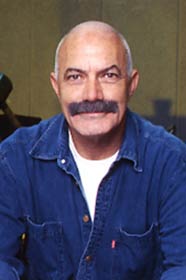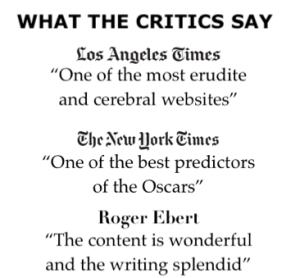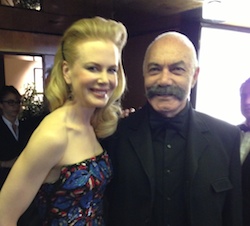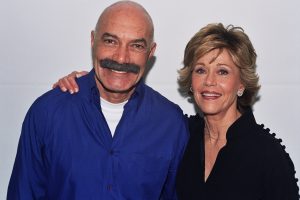At Hitchcock’s insistence, the film was made in Paramount’s VistaVision widescreen process.
Only two VistaVision films were made at MGM, the other being High Society.
The aircraft flying in the aerial chase scene is a Naval Aircraft Factory N3N Canary, better known as the “Yellow Peril,” a World War II Navy primary trainer sometimes converted for crop-dusting. The aircraft that hits the truck and explodes is a wartime Stearman Boeing Model 75 trainer, and many of these were also used for agricultural purposes through the 1970s. The plane was piloted by Bob Coe, a crop-duster from Wasco. Hitchcock placed replicas of square Indiana highway signs in the scene. The British film magazine Empire ranked the crop-duster scene as the “greatest movie moment” of all time in its August 2009 issue.
Among the locations used in the film are:
430 Park Avenue
This is the building used by Saul Bass during the opening credits. The building was constructed in 1916 as luxury apartment tower called the “Avenue Apartments” and was designed by the firm Warren and Wetmore.
In 1953, the building was stripped of its façade, given a new curtain wall designed by Emery Roth and Sons in the style of Lever House, and converted to offices.
Bass’ title sequence is based off the geometric structure of the international style.
Commercial Investment Trust Building
650 Madison Avenue, New York
This is the location of Roger Thornhill’s office, and the building he walks out of in his first appearance in the film. The CIT Building was designed by the firm Harrison and Abramovitz and constructed in 1957.
Plaza Hotel
768 Fifth Avenue, New York
After taking a cab with his secretary, Thornhill has a drink in the Oak Room of the Plaza Hotel. It is here that he is kidnapped by Vandamm’s henchmen. Thornhill later returns to the Plaza, where he breaks into George Kaplan’s room.
Old Westbury Gardens
71 Old Westbury Road, Old Westbury
Thornhill’s kidnappers drive him to Vandamm’s estate on Long Island. After questioning Thornhill, Vandamm instructs Leonard and his henchmen to intoxicate Thornhill by force.
United Nations Headquarters
After Thornhill’s escape from Vandamm’s henchmen at the Plaza, he takes a taxi to the United Nations Building to meet Lester Townsend. The UN Building was also designed by Harrison and Abramovitz, the architects of Thornhill’s office.
The scene of Cary Grant going to the UN in New York was filmed illicitly because UN authorities denied permission to film on or near its property, after reviewing the script. After two failed attempts to get the required shots, Hitchcock had Grant pull up in a taxicab right outside the general assembly building while a hidden camera crew filmed him exiting the vehicle and walking across the plaza.
Grand Central Terminal
89 East 42nd Street, New York
Following the murder of Townsend at the United Nations, Thornhill rushes to Grand Central Terminal, where he sneaks onto the 20th Century Limited on route to Chicago.
LaSalle Street Station
414 South LaSalle Street, Chicago
Thornhill and Eve Kendall arrive in Chicago at the LaSalle Street Station. At the station, Kendall gives Thornhill instructions for his meeting with Kaplan.
Prairie Stop
The famous “crop duster scene,” which in the film takes place in rural Indiana, was actually shot on highway in central California near the town Wasco. Hitchcock added square signs to the location in order to replicate those found in Indiana.
Ambassador East Hotel, Chicago
Thornhill returns to Chicago in stolen truck that he parks outside the Ambassador East Hotel. The hotel opened in 1926 and was designed by Robert S. DeGolyer and Co. Today it continues to be operated as a hotel under the name The Ambassador.
Chicago Midway Airport
Following Thornhill’s arrest at the auction, he and the professor travel to Midway Airport where they board a flight for Rapid City, South Dakota. The terminal seen in the film was built in 1945-46 and was designed by architect Paul Gerhardt Sr. This terminal building was demolished in 2002.
Memorial View Building, Mount Rushmore
The spurious murder of Roger Thornhill takes place in the Buffalo Room of the Memorial View Building at Mount Rushmore. This building was constructed in 1957 as part of the National Park Service’s Mission 66 program, and was designed jointly by NPS architect Cecil J. Doty and local architect Harold Spitznagel. The building was demolished in 1994.
Phillip Vandamm House
Vandamm’s house, set on a cliff atop Mount Rushmore, was not a real structure. Hitchcock asked the set designers to make the house in the style of Frank Lloyd Wright, the most popular architect at the time, using the materials, form and interiors associated with him. Set designer Robert F. Boyle planned the house, which featured a cantilevered living room and made extensive use of limestone. Exterior shots were done using matte paintings, while interior shots were filmed using a set built in Culver City, California, where MGM’s studios were located.










